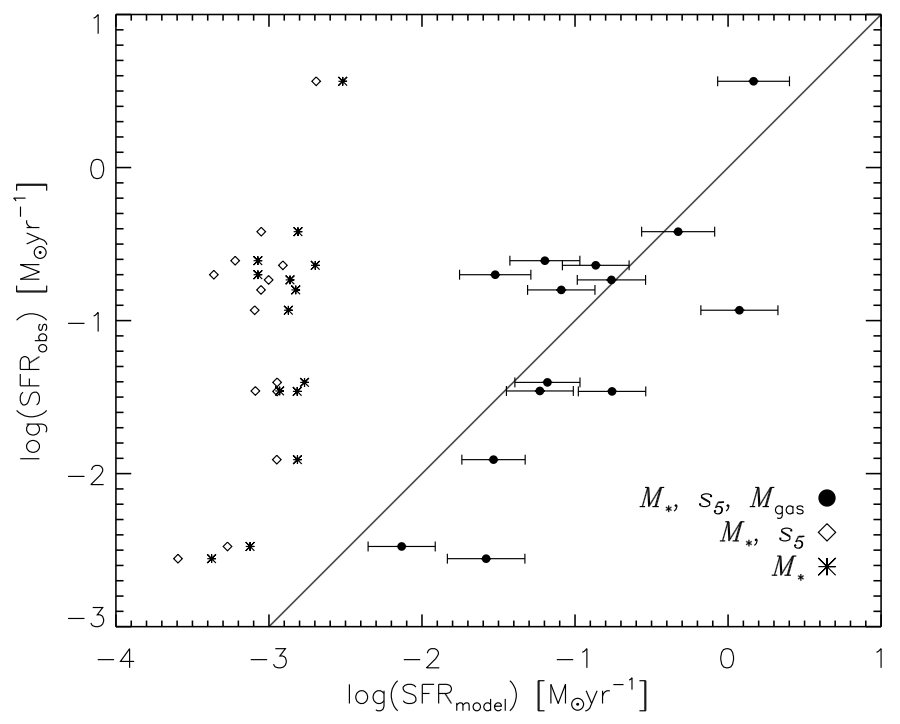
Contact Info
Australian National University
christoph.federrath@anu.edu.au
+61 (0)2 6125 0217
0000-0002-0706-2306
GitHub Bitbucket
Star formation in galaxies relies on the availability of cold, dense gas, which, in turn, relies on factors internal and external to the galaxies. In order to provide a simple model for how star formation is regulated by various physical processes in galaxies, we analyse data at redshift z = 0 from a hydrodynamical cosmological simulation that includes prescriptions for star formation and stellar evolution, active galactic nuclei, and their associated feedback processes. This model can determine the star formation rate (SFR) as a function of galaxy stellar mass, gas mass, black hole mass, and environment. We find that gas mass is the most important quantity controlling star formation in low-mass galaxies, and star-forming galaxies in dense environments have higher SFR than their counterparts in the field. In high-mass galaxies, we find that black holes more massive than ~ 10^7.5 solar masses can be triggered to quench star formation in their host; this mass scale is emergent in our simulations. Furthermore, this black hole mass corresponds to a galaxy bulge mass ~ 2 x 10^10 solar masses, consistent with the mass at which galaxies start to become dominated by early types (~ 3 x 10^10 solar masses, as previously shown in observations by Kauffmann et al.). Finally, we demonstrate that our model can reproduce well the SFR measured from observations of galaxies in the Galaxy And Mass Assembly and Arecibo Legacy Fast ALFA surveys.
Movie of the evolution of gas temperature:

Comparison of measured star formation rate (SFR_obs) in 14 galaxies from the GAMA and ALFALFA surveys and predicted star formation rate (SFR_model) from our new galaxy star formation model. We see that the gas mass (M_gas) is the most important driver of the star formation rate, with important additional contributions from the stellar mass (M_*) and the galaxy environment (s_5).
We thank the referee for their useful comments, which improved the quality of this paper. C.F. gratefully acknowledges funding provided by the Australian Research Council's Discovery Projects (grants DP150104329 and DP170100603). The simulations presented in this work used high performance computing resources provided by the Leibniz Rechenzentrum and the Gauss Centre for Supercomputing (grants pr32lo, pr48pi and GCS Large-scale project 10391), the Partnership for Advanced Computing in Europe (PRACE grant pr89mu), the Australian National Computational Infrastructure (grant ek9), and the Pawsey Supercomputing Centre with funding from the Australian Government and the Government of Western Australia, in the framework of the National Computational Merit Allocation Scheme and the ANU Allocation Scheme. This work has made use of the University of Hertfordshire Science and Technology Research Institute high-performance computing facility. PT thanks S. Lindsay for helpful discussions. Finally, we thank V. Springel for providing GADGET-3.